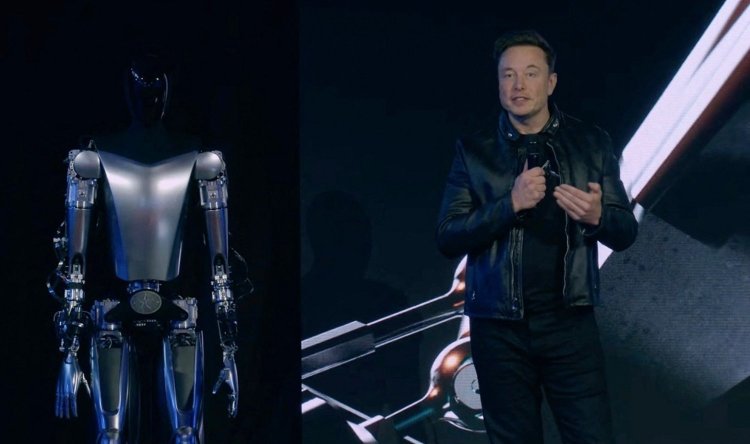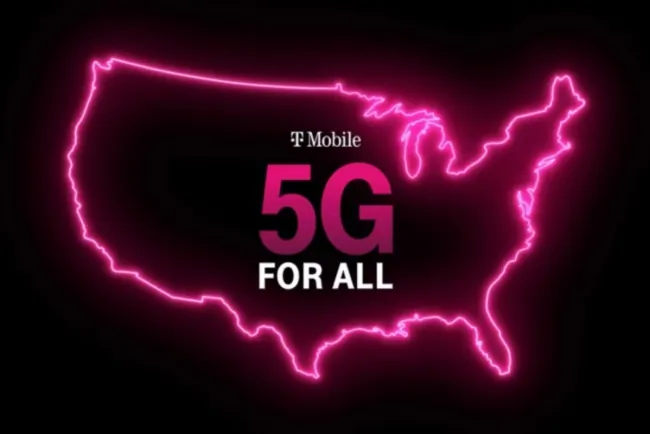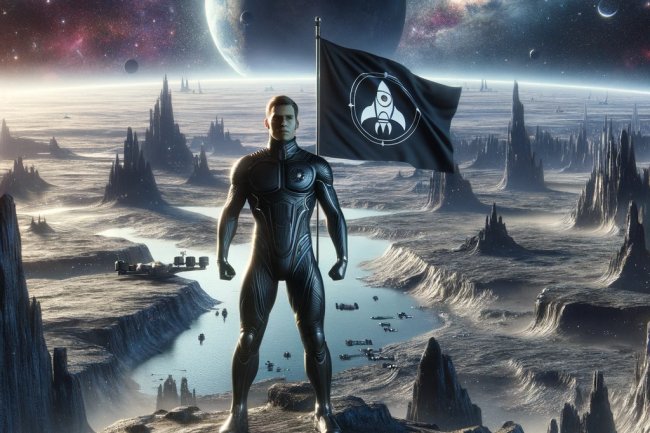Unveiling the Future: Tesla's Optimus and the Evolution of Humanoid Robots in Work
The Rise of Humanoid Robots: Tesla's Optimus and the Future of Work

Outline for "The Rise of Humanoid Robots: Tesla's Optimus and the Future of Work"
-
Introduction
- Overview of the evolution of humanoid robots
- Brief mention of Elon Musk's vision with Tesla's Optimus
-
Elon Musk's Vision for Humanoid Robots
- Optimus: The inception and purpose
- The potential impact on daily tasks and hazardous jobs
-
The Technology Behind Optimus
- Integration of Tesla's expertise in batteries and motors
- Utilization of self-driving data for robotic refinement
-
Safety and Effectiveness Concerns
- Autopilot and Full-Self Driving Capabilities
- Public and regulatory scrutiny
-
Tesla's Robotics Talent Acquisition
- Expertise in motion planning, computer vision, and mechanical engineering
- Challenges in robotics development
-
The Socio-economic Impact of Robotics
- Musk's perspective on job disruption and robot-human collaboration
- Potential for enhancing life quality
-
Tesla's Optimus: A Step Towards Advanced Robotics
- Progress and challenges in development
- The promise of Optimus in reshaping futures
-
Competing in the Robotics Race: Figure AI and Microsoft's Involvement
- Overview of Figure AI and its achievements
- The strategic partnership between Microsoft, OpenAI, and Figure AI
-
Humanoid Robots in Industry
- Case study: BMW's collaboration with humanoid robots
- The future of robots in manufacturing
-
Public Perception and Acceptance
- Challenges in societal acceptance
- The importance of safety and transparency
-
Regulatory and Ethical Considerations
- Governing the deployment of humanoid robots
- Ethical dilemmas and solutions
-
The Future of Employment in the Age of Robots
- Reskilling the workforce
- The new job landscape
-
Investment Opportunities in Robotics
- Trends in robotics funding
- How investors are contributing to the future of robotics
-
Innovation and Challenges in Robotics
- The cutting edge of robotics technology
- Overcoming current limitations
-
Global Impact of Humanoid Robots
- How different countries are adopting and adapting to robotics
- International cooperation and competition
-
The Role of AI in Advancing Robotics
- The synergy between AI and robotics
- Future prospects of AI-driven robots
-
FAQs
- Addressing common questions about humanoid robots and their impact
-
Conclusion
- Summarizing the potential of humanoid robots
- The road ahead for Tesla's Optimus and the broader robotics industry
The Rise of Humanoid Robots: Tesla's Optimus and the Future of Work
In an era where technology seamlessly blends into our daily lives, the concept of humanoid robots transitioning from science fiction to reality is becoming increasingly tangible. Spearheaded by visionaries like Elon Musk, the development of humanoid robots such as Tesla Inc.'s Optimus promises to redefine our approach to both mundane and complex tasks. This article explores the inception, development, and future implications of Optimus and similar innovations in the realm of humanoid robotics.
Elon Musk's Vision for Humanoid Robots
Elon Musk, the CEO of Tesla Inc., envisions a future where humanoid robots, such as Optimus, become integral to everyday life. Optimus, designed to handle a spectrum of activities from simple household chores to intricate, hazardous tasks, embodies Musk's aim to alleviate humans from the tedium of repetitive work. This vision was highlighted in a message on X, where Musk detailed Optimus's capability to neatly fold a shirt, showcasing the robot's potential to take on daily chores with ease.
The Technology Behind Optimus
Tesla's venture into humanoid robotics leverages its established prowess in battery technology and electric motors, repurposing these strengths to breathe life into robots instead of cars. Furthermore, the wealth of data from Tesla's self-driving vehicles is a goldmine for refining the autonomy and decision-making capabilities of its robots. Despite the innovative strides, Tesla faces scrutiny over the safety and real-world performance of its Autopilot and Full-Self Driving features, underscoring the challenges of bridging the gap between ambitious claims and actual functionality.
Safety and Effectiveness Concerns
The road to integrating robots like Optimus into society is fraught with concerns regarding safety and effectiveness. The skepticism surrounding Tesla's autonomous driving technologies mirrors the apprehension towards deploying humanoid robots in uncontrolled environments. Ensuring the reliability and safety of these robots remains a paramount challenge that Tesla is determined to overcome.
Tesla's Robotics Talent Acquisition
In pursuit of advancing Optimus's capabilities, Tesla is on the hunt for specialists in motion planning, computer vision, and mechanical engineering. The quest to surmount the remaining hurdles in robotics underscores the complexity of creating robots that can seamlessly integrate into various aspects of human life.
The Socio-economic Impact of Robotics
Musk's dialogue at the National Governors Association 2017 Summer Meeting shed light on the impending robot revolution's potential to disrupt job markets. Yet, Musk remains optimistic about the symbiotic relationship between humans and robots, suggesting that robots could free humans from mundane tasks, thereby enriching the quality of human life.
Tesla's Optimus: A Step Towards Advanced Robotics
Optimus Gen 2 represents Tesla's ongoing efforts to push the boundaries of technology and redefine future work landscapes. Although still in the nascent stages, the project reflects Musk's unwavering commitment to innovation, hinting at a future where AI-powered robots could significantly impact job markets and daily living.
Competing in the Robotics Race: Figure AI and Microsoft's Involvement
The robotics arena is not limited to Tesla's endeavors. Figure AI, backed by industry giants like Microsoft Corp. and OpenAI, is making notable strides with its humanoid robots, exemplified by Figure-01's ability to prepare coffee after observing humans. Such achievements underscore the rapid advancements in robotics, fueled by collaborations that meld technological prowess with strategic vision.
Humanoid Robots in Industry
The application of humanoid robots extends beyond household tasks, venturing into industrial realms as seen in BMW's partnership with robotics firms. This collaboration aims to deploy humanoid robots alongside human workers, highlighting the potential for robots to enhance efficiency and safety in manufacturing settings.
Conclusion
The evolution of humanoid robots, epitomized by Tesla's Optimus, marks a significant milestone in technological advancement. As these robots inch closer to becoming a staple in our daily lives and workspaces, the collective efforts of visionaries like Musk and companies across the globe signal a future where human potential is augmented by robotic prowess. The journey of Optimus from concept to reality not only showcases the possibilities of humanoid robotics but also challenges us to reimagine the future of work and society.
FAQs
- What tasks are humanoid robots like Optimus designed for?
- How does Tesla's experience in electric vehicles benefit its robotics projects?
- What are the main concerns surrounding the deployment of humanoid robots?
- How could humanoid robots impact the job market?
- What advancements are being made in robotics outside of Tesla's efforts?
- How are industries planning to integrate humanoid robots into their operations?
What's Your Reaction?






















